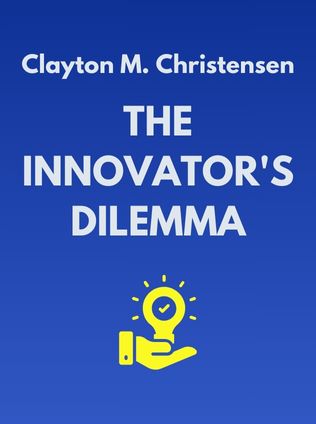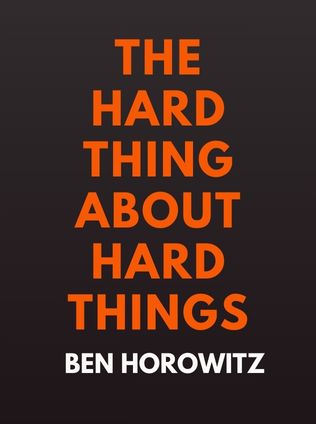
The Innovator's Dilemma
The Revolutionary Book that Will Change the Way You Do Business
By Clayton M. Christensen
Published 01/1997
About the Author
Clayton M. Christensen, a Harvard Business School professor, is a leading expert on business innovation. His groundbreaking work on disruptive innovation has profoundly impacted the way we understand business strategies and market evolution. Christensen's insights challenge conventional business wisdom, offering a new perspective on why successful companies can sometimes fail. His influence extends beyond academia, reaching CEOs, entrepreneurs, and leaders across industries. With "The Innovator's Dilemma," Christensen solidified his reputation as a thought leader, providing a roadmap for navigating the complexities of technological and market disruption.
Main Idea
"The Innovator's Dilemma" introduces the concept of disruptive innovation and its paradoxical impact on established companies. Christensen argues that companies that follow sound business practices, such as listening to customers and investing in profitable ventures, can be blindsided by disruptive innovations. These innovations, initially inferior to existing products, eventually reshape markets by offering new value propositions that mainstream customers eventually adopt. The dilemma lies in the fact that the very practices that make companies successful can also lead to their downfall when faced with disruptive change.
Table of Contents
- Introduction to Disruptive Innovation
- The Innovator's Dilemma: A Double-Edged Sword
- Disruptive vs. Sustaining Innovations
- The Chronology of Disruptive Innovation
- Challenges Faced by Established Companies
- Strategies for Embracing Disruptive Innovation
- Case Studies: Success and Failure
- Conclusion: Navigating the Innovator's Dilemma
Introduction to Disruptive Innovation
Disruptive innovation, as defined by Christensen, refers to innovations that disrupt the status quo in an industry by introducing products or services that are initially seen as inferior by mainstream customers. Over time, these innovations improve and begin to offer more value than traditional alternatives, leading to widespread adoption and, often, the displacement of established companies.
One of the most compelling aspects of Christensen's theory is its focus on the unexpected nature of disruption. He explains that disruptive innovations often start in small, niche markets, overlooked by established companies because they don't seem profitable enough. However, as these innovations mature and gain traction, they can upend entire industries.
"Disruptive technology should be framed as a marketing challenge, not a technological one." - Clayton M. Christensen
The Innovator's Dilemma: A Double-Edged Sword
The central premise of "The Innovator's Dilemma" is that the very principles that lead companies to success can also cause them to fail. Christensen argues that companies are driven by customer demands and the pursuit of higher profits, which leads them to focus on sustaining innovations—incremental improvements to existing products. While this approach works well in stable markets, it becomes a liability when disruptive innovations emerge.
Christensen illustrates this dilemma with numerous examples from industries such as computing, where established leaders like IBM and Digital Equipment Corporation lost their dominant positions to upstart companies that embraced disruptive technologies. The dilemma is that companies must choose between continuing to satisfy their current customers or investing in emerging technologies that may not be immediately profitable but have the potential to revolutionize the market.
Disruptive vs. Sustaining Innovations
Christensen makes a clear distinction between disruptive and sustaining innovations. Sustaining innovations are improvements that help companies serve their existing customers better. These innovations often involve enhancing the performance, features, or efficiency of a product. For example, adding more horsepower to a car engine or improving the battery life of a smartphone are sustaining innovations.
On the other hand, disruptive innovations initially underperform compared to existing products. They are typically cheaper, simpler, and target a different segment of the market—often one that established companies ignore. Over time, however, these innovations improve and begin to meet the needs of mainstream customers, eventually overtaking the market leaders.
Sign up for FREE and get access to 1,400+ books summaries.
You May Also Like
The Lean Startup
How Today's Entrepreneurs Use Continuous Innovation to Create Radically Successful Businesses
By Eric RiesWho Moved My Cheese?
An Amazing Way to Deal with Change in Your Work and in Your Life
By Spencer Johnson, M.D.Make Your Bed
Little Things That Can Change Your Life...And Maybe the World
By William H. McRavenThe Ride of a Lifetime
Lessons Learned from 15 Years as CEO of the Walt Disney Company
By Robert IgerThe Hard Thing About Hard Things
Building a Business When There Are No Easy Answers
By Ben Horowitz



















